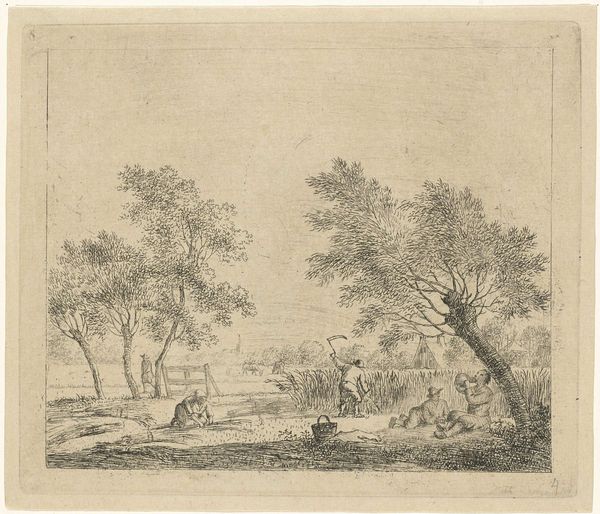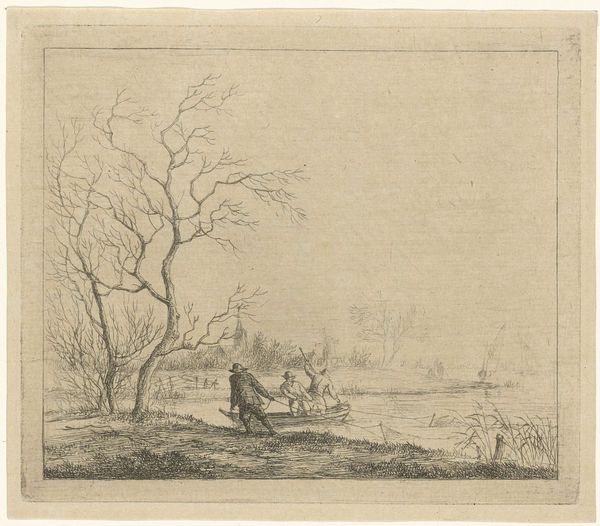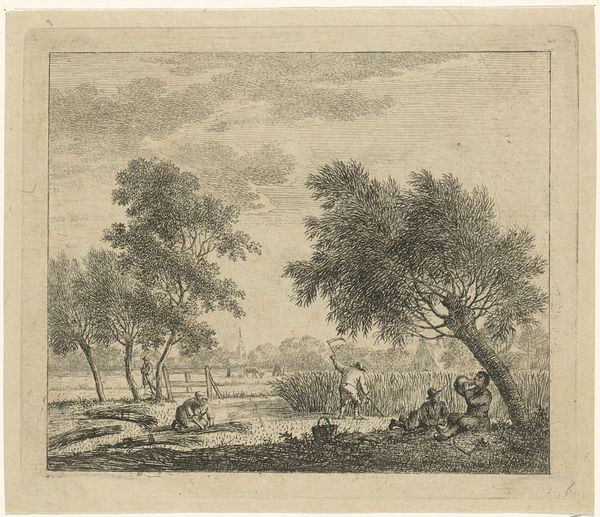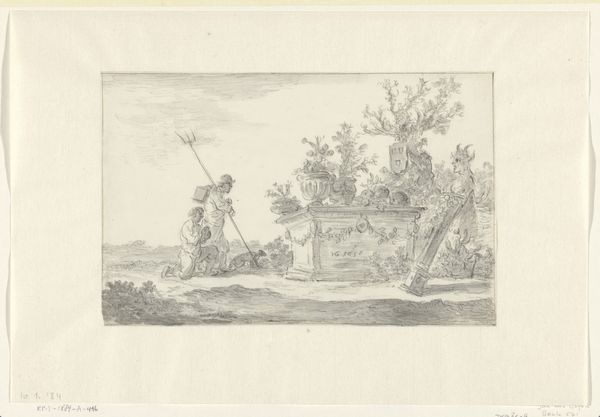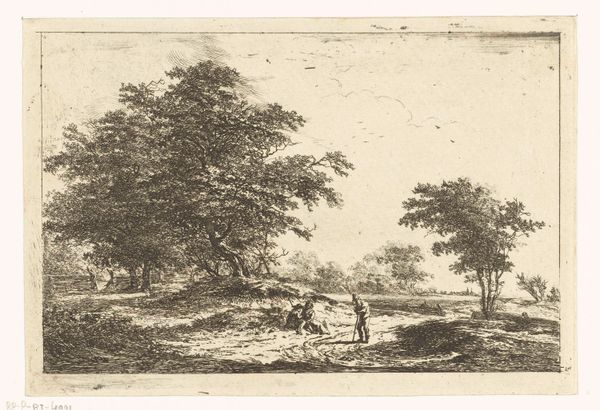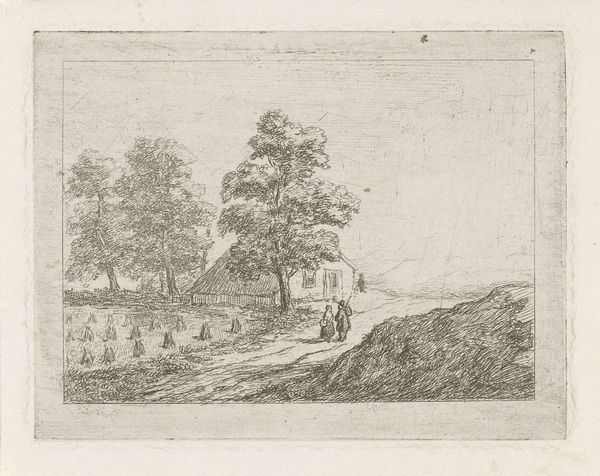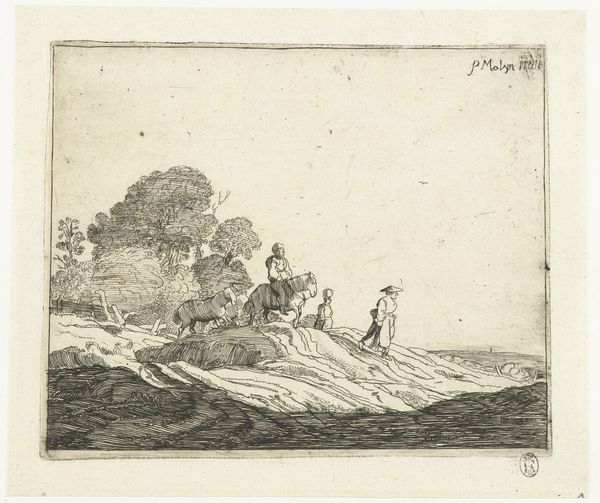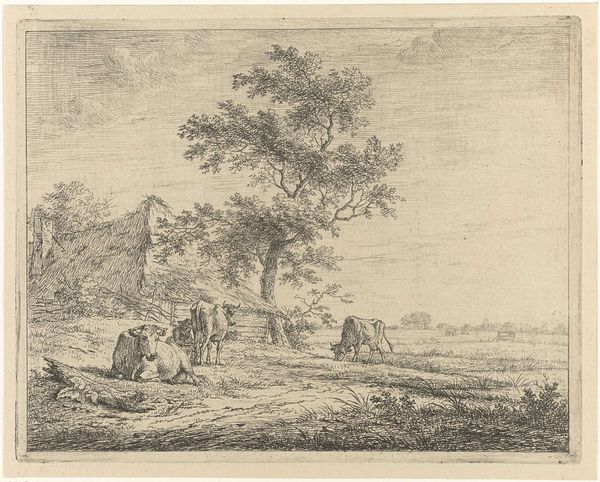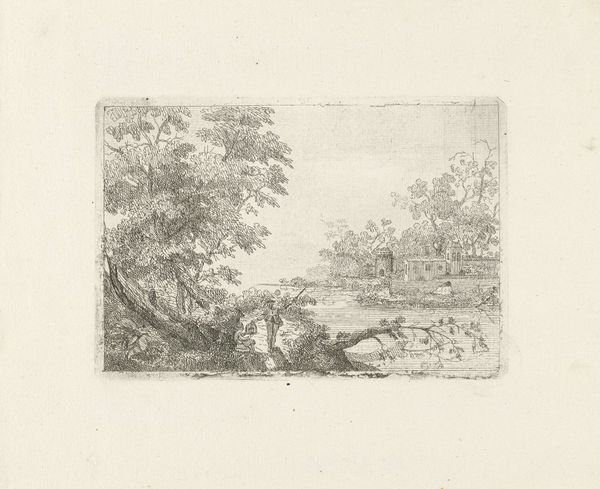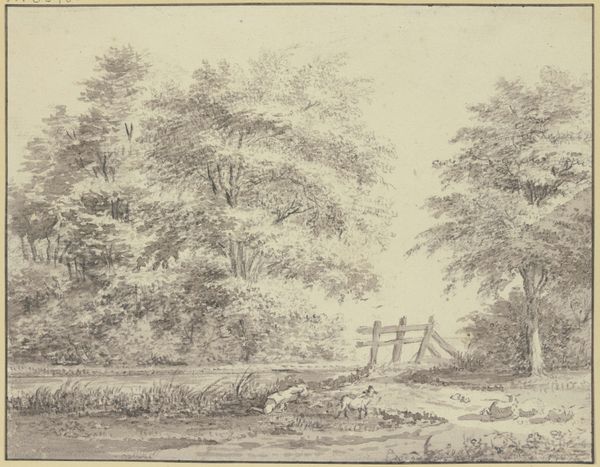
Dimensions: height 144 mm, width 169 mm
Copyright: Rijks Museum: Open Domain
Editor: This etching, "Akker met boeren," or "Field with Farmers" by Johannes Janson, created in 1783, depicts laborers in a field. The stark simplicity and the depiction of rural life give it a somber, almost romantic feel. How do you interpret this work, considering its historical context? Curator: I see this piece as a potent commentary on the agrarian life of the late 18th century. Consider the Enlightenment ideals circulating at the time – ideas about equality and the value of human labor. Does this etching, with its focus on the peasantry, celebrate their connection to the land, or perhaps subtly critique their arduous existence? Editor: It does feel ambivalent. I notice the figures are small and somewhat anonymous within the vast landscape, which could point to their relative powerlessness. Curator: Exactly. And the medium itself, etching, allows for incredible detail, highlighting the textures of the earth and clothing, thus emphasizing the material reality of their lives. Do you think Janson romanticizes rural life, or does he present it with unflinching realism? Editor: I initially thought it was romantic, but now I see a strong element of social observation. The lack of idealization makes me think about class structures. Curator: Precisely! And within those class structures, how are roles assigned? Notice the depiction of labor here – who is doing what, and what does that say about gender and social roles at the time? These visual narratives reflected and reinforced the existing social order. Editor: It’s fascinating how much is packed into what seemed like a simple landscape at first glance. I’m definitely seeing this with fresh eyes now. Curator: Indeed. Art provides us with unique opportunities to investigate social and power structures that shape people’s daily experience, offering insight and perspective that promotes crucial dialogues today.
Comments
No comments
Be the first to comment and join the conversation on the ultimate creative platform.
